High Energy Physics
High Energy Laboratory: Cosmic Ray Testing
High Energy Physics
High Energy Laboratory: Cosmic Ray Testing
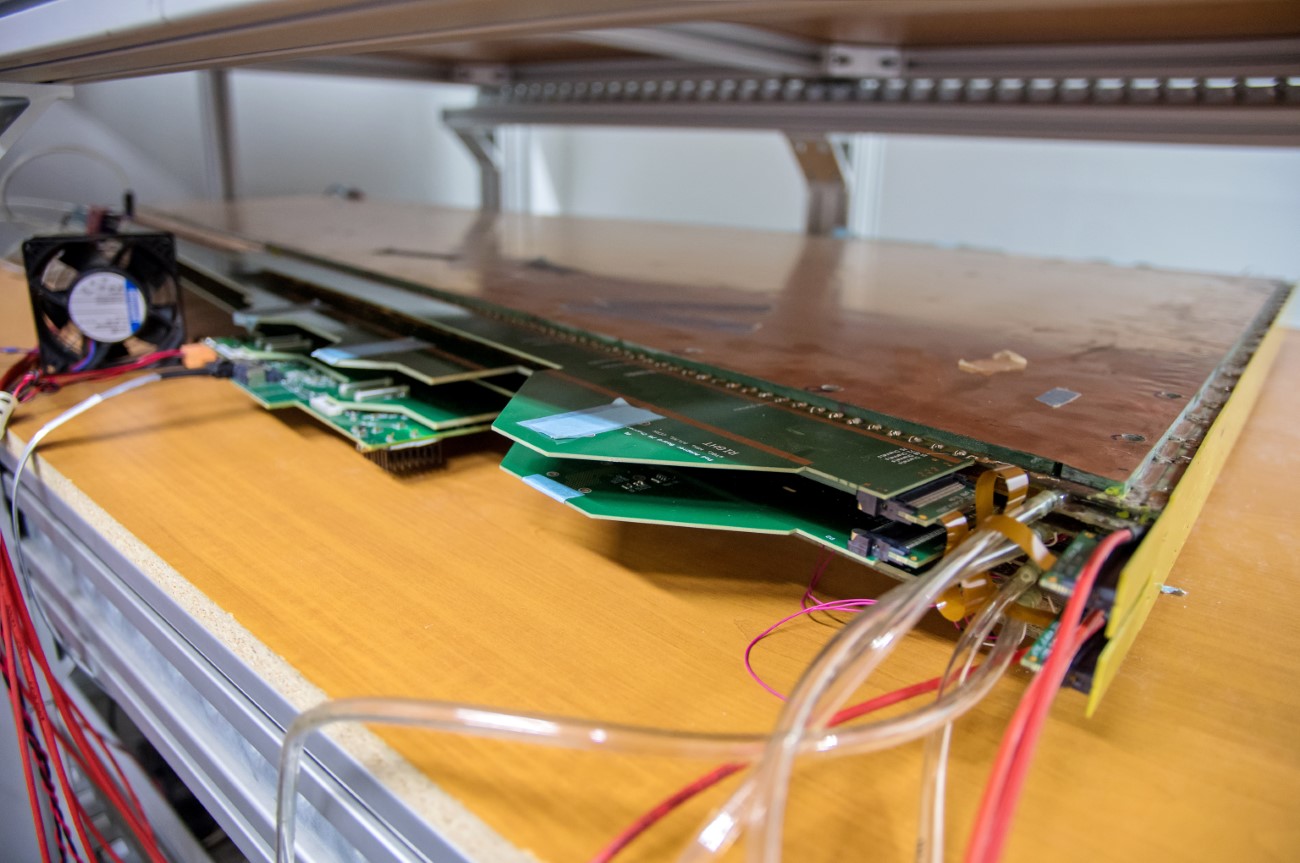
Small strip Thing Gap Ghamber
This is a gas ionization detector called Small strip Thing Gap Ghamber (sTGC). It is used experimentally to detect the decay of electrically charged particles passing through it.
The sTGC is characterized by its millimeter resolution, allowing it to distinguish particles and reconstruct their trajectories, even if they are as small as a muon. The green boards are the Strip Front-end boards (sFEB) and are in charge of extracting the signal that is produced inside the sTGC detectors when they manage to detect a particle.
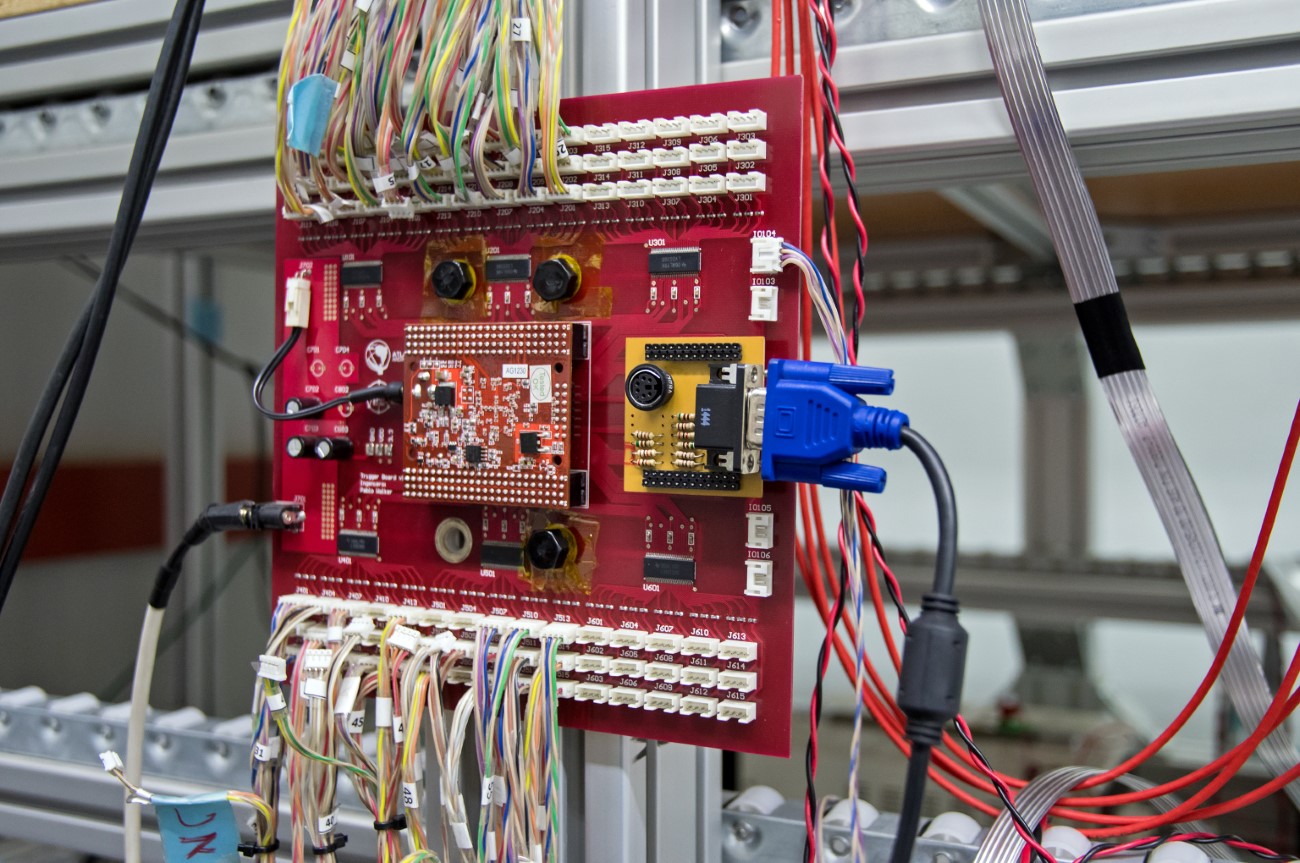
FPGA
Field Programmable Gate Array (FPGA) board. This board collects information from the scintillator materials to trigger the data capture from the sTGC detector. In this image, these are located above and below the optical table.
When an electrically charged particle passes through a scintillator material, it releases part of its kinetic energy into the material, exciting it. As its
excitation decreases, it emits photons at narrow wavelengths and generates fluorescence. This light is converted into electrical pulses of current that are amplified and processed
to obtain information about the detected particle.
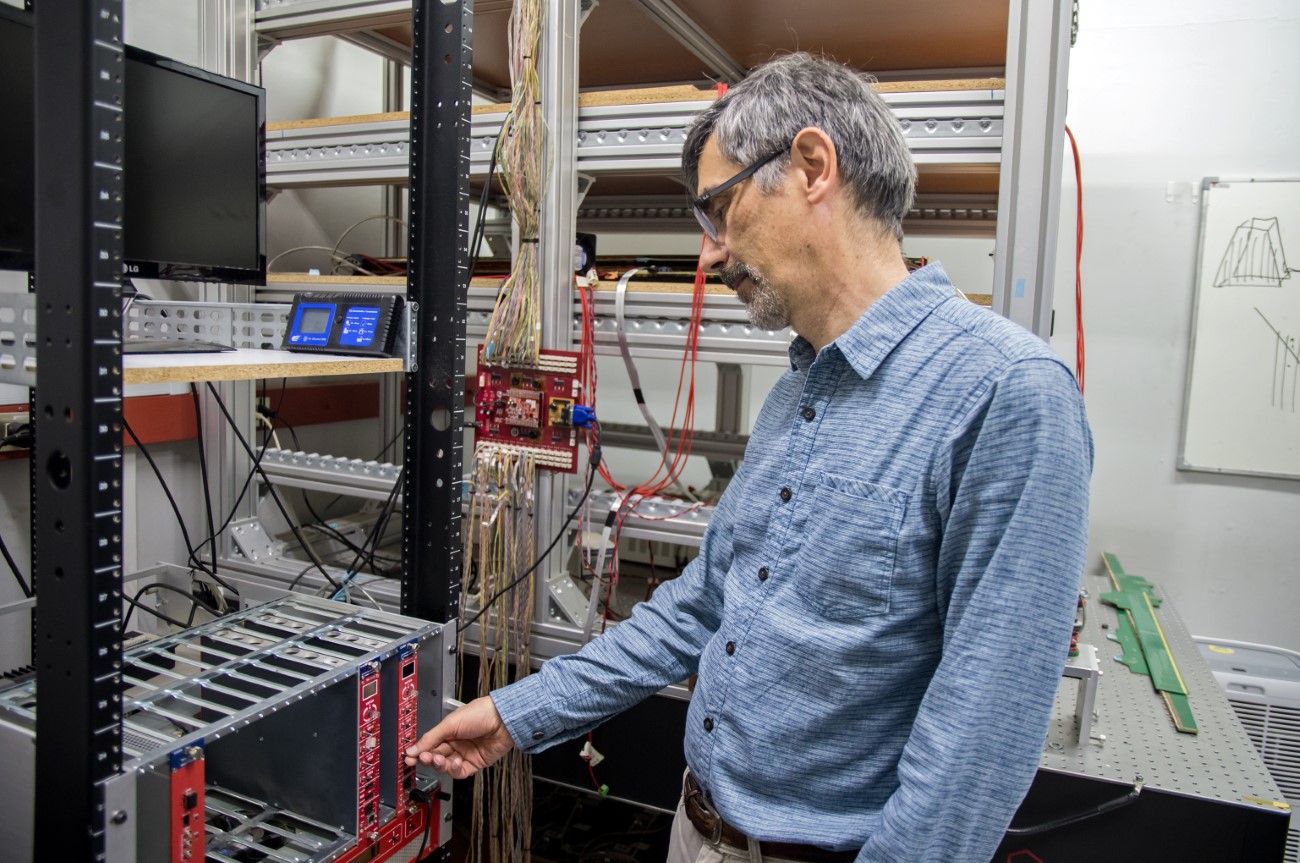
CAEN Voltage
Professor Marco Aurelio Díaz operates the CAEN high voltage supply, which provides the voltage difference to the sTGC detector chambers to collect the ions produced by a charged particle passing through the gas in the chamber.
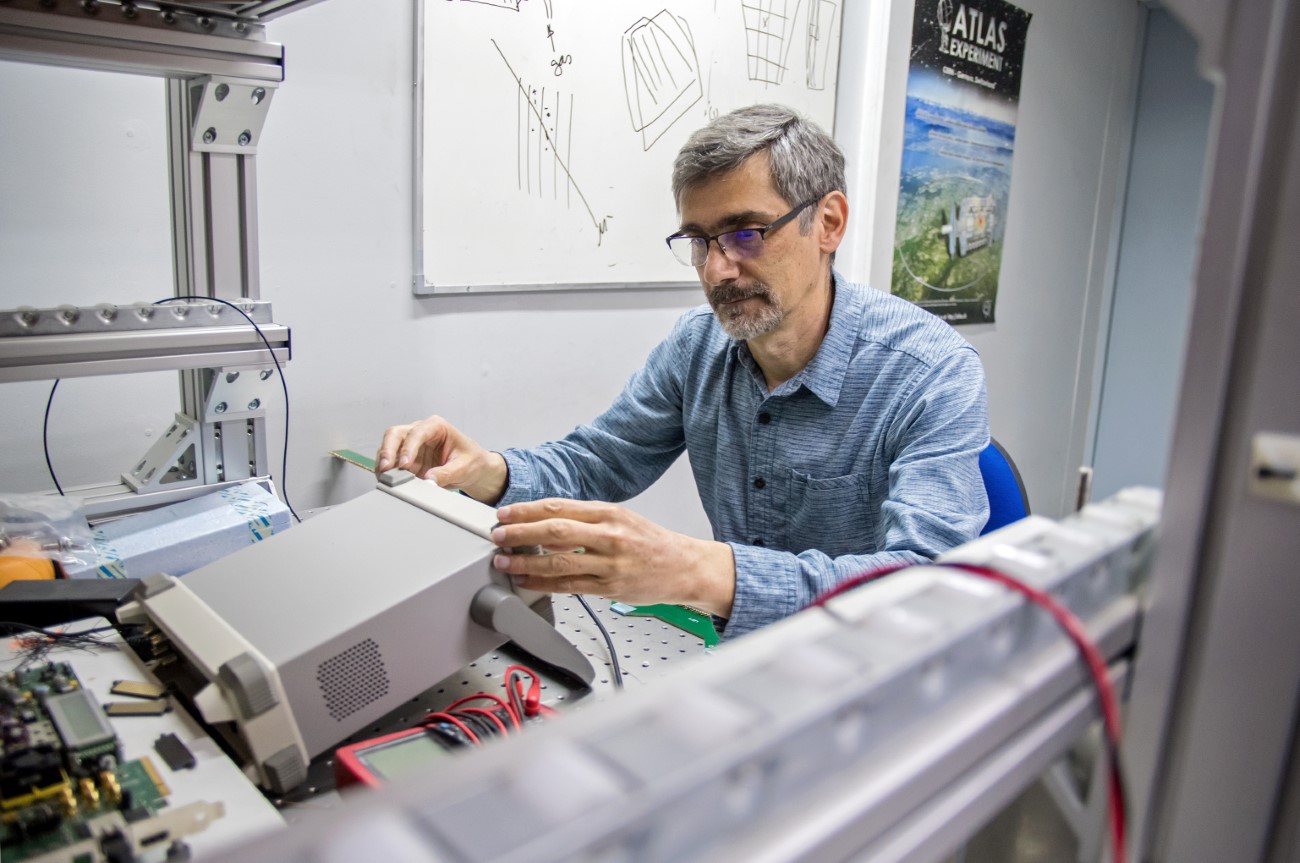
FPGA
Professor Marco Aurelio Díaz handles the printed circuit board (PCB) that connects the sTGC detector to the FPGA board.
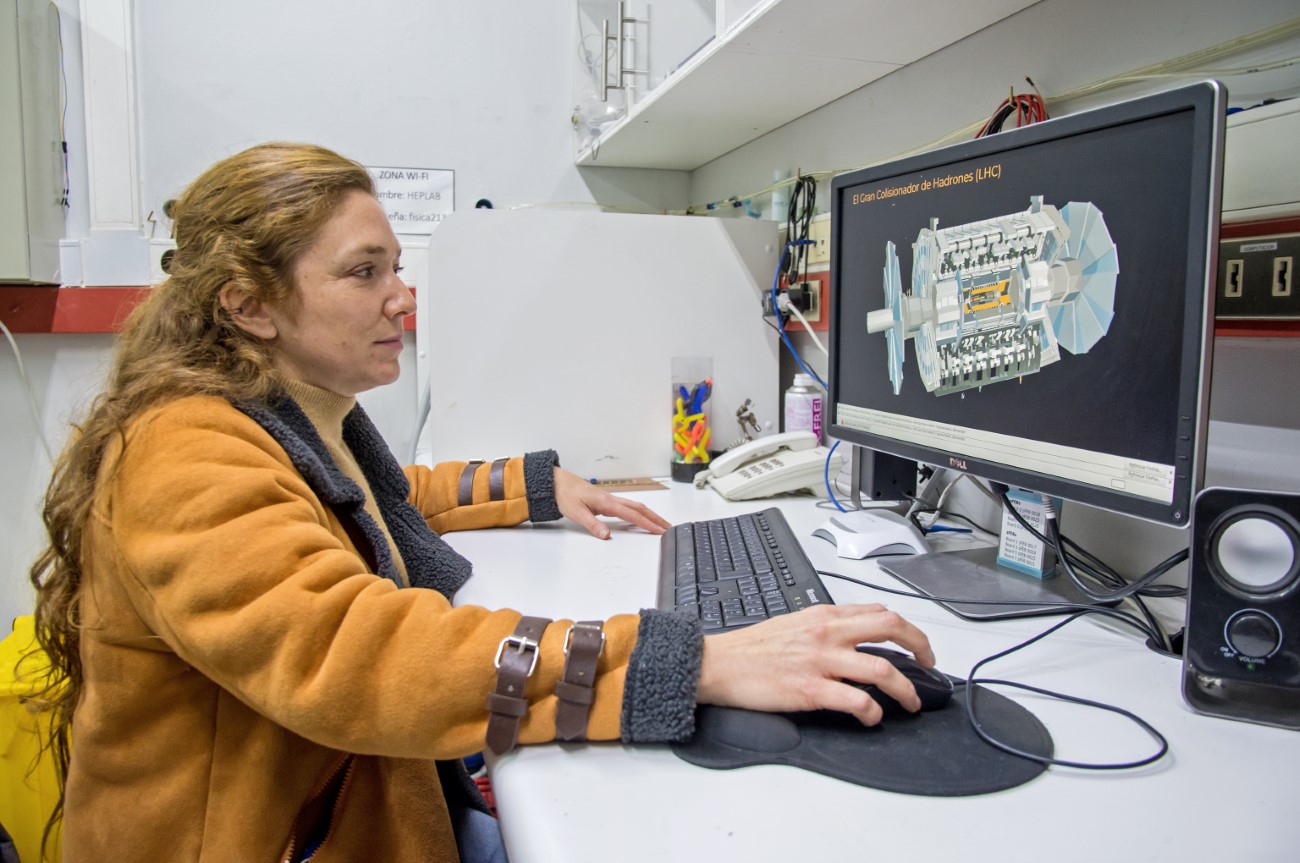
High Energy Laboratory Computer
Professor Francisca Garay at the computer in the High Energy laboratory, where all the data is collected for subsequent analysis.
Welcome to the High Energy Laboratory: Cosmic Ray Testing. In this laboratory we carry out experimental research in High Energy Physics.
We invite you to click on each of the highlighted points to learn more about our techniques and equipment.